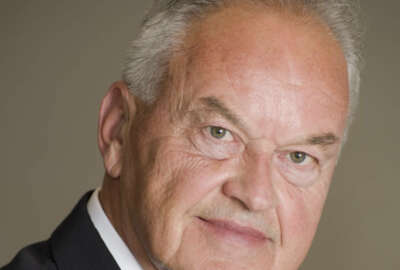
COBOL and Donald Trump
COBOL itself, while expensive and increasingly difficult to maintain, stands as the proxy for the actual modernization difficulties.
Got your attention? COBOL has nothing to do with Donald Trump, except that everybody talks about them both. Politically-minded people can’t stop thinking and expressing opinions about Trump. Tech people concerned with the government IT modernization deficit rarely fail to cite all that software originally written in COBOL, running throughout the government. Millions of millions of lines of it — all written by programmers who are either long dead or enjoying shuffleboard in Florida.
In a recent column, I mentioned the fact that it’s not COBOL for COBOL’s sake that the government maintains old systems on new hardware. No practical, easy way exists to replace the COBOL, or Fortran or whatever antique language that embodies the logic of, say, the tax system or the Centers for Medicare and Medicaid Services.
That prompted an Energy Department reader to write to me in defense of COBOL and Fortran. They run, they do the job, he says. They’ve endured for a reason. He points out that we all arrived at work today on very ancient technology — the wheel. Fair enough. Plus, he added, no matter what whoop-dee-doo language you program in, it still has to be compiled into machine language so the transistors turn on and off.
More commentary
At an AFCEA Bethesda luncheon yesterday, I spoke with a technology manager for a large bureau in a large department. He’s something of a go-to guy for agile development. I asked, if COBOL really has to go, can’t the logic simply be replicated in a modern language so it’s easier to update and apply to online applications?
The answer: Yes and no. Yes for the logic derived purely from the rules for the mission. Such as how to express the tax code in software code. Under what circumstances someone is eligible for Medicare. Enrolling someone as an employee. But “no” for how agencies follow the law on business rules and processes — that’s typically a bunch of incomprehensible spaghetti that no one really grasps. So no one dares to reprogram it.
Take this column as analogy. I try and follow a simple rule. Get it to the web editors in time for posting by 6 a.m. But if I tried to explain the process by which I actually figure out what to write, research it, and then bang it out, you’d think I was mad. All you see is that it’s there in the morning.
COBOL itself, while expensive and increasingly difficult to maintain, stands as the proxy for the actual modernization difficulties. The real impediments and hidden costs lie in convoluted, poorly documented business processes that have grown and sprouted many branches willy nilly, pulling along more code as they do.
At the AFCEA event, Tracy Terrill, the chief digital officer at the Small Business Administration, commented that there’s no contract, much less a plan, for the IRS to replace its 1956 tax system. Notwithstanding the fact that the IRS, for all its woes, has made tangible strides in recent years modernizing at least parts of its array of system, the idea prevails. COBOL persists. The government faces the choice then of either finally grabbing this tiger’s tail or maybe endowing a COBOL programming department somewhere. I nominate San Jose State University. It’s in Silicon Valley.
Copyright © 2024 Federal News Network. All rights reserved. This website is not intended for users located within the European Economic Area.
Tom Temin is host of the Federal Drive and has been providing insight on federal technology and management issues for more than 30 years.
Follow @tteminWFED





